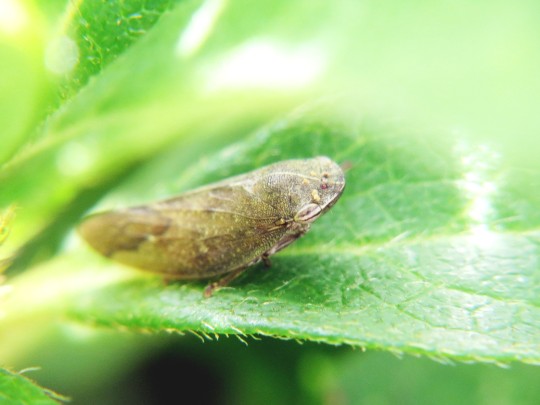#spittlebug
Text
I saw. SO MANY BUG today. (Sorry in advance for bad phone camera quality and shaky hands)
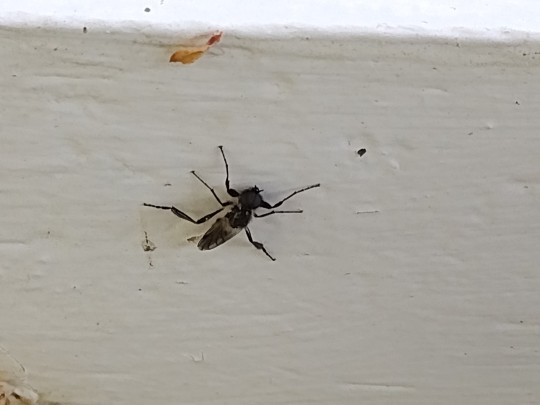
Male March fly!!! (Thanks to @microecobus for the ID!)

Baby sawfly!
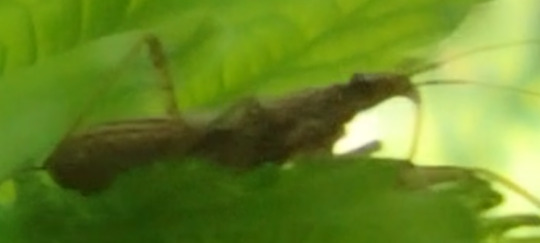
Tiny assassin bug!

Flat bug (actually what they're called) and a zebra jumping spider!

Better look at the jumping spider!

Male California glowworm (species of firefly where only the babies and wingless females glow)!
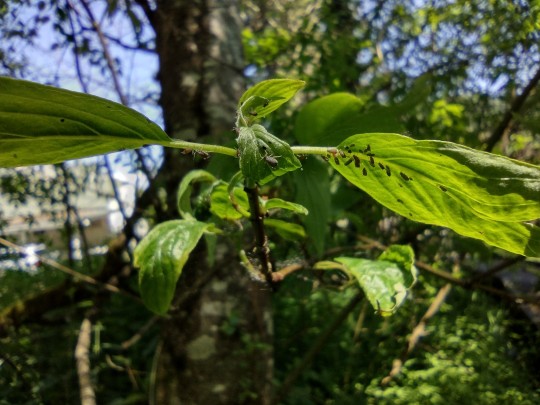
Aphids!

Spittlebug (hiding in the foam on the leaf)!

And last but not least, a huge male snakefly (females have long ovipositors)!!!! So cool to find this one, I've only seen one in person once before in my life!
That's not counting the crane flies, honeybees, ants, little round orange mite, various flies, brown marmorated stink bug (of course), tiger butterfly, boxelder bugs, and tons of little parasitoid wasps I saw pollinating. An excellent bug day for Rev!
#rev retches#insect#bug#assassin bug#aphid#snakefly#firefly#glowworm#spittlebug#fly#spider#jumping spider#true bug#flat bug#beetle#sawfly#larva#my art#photos are art it works#long post
144 notes
·
View notes
Photo
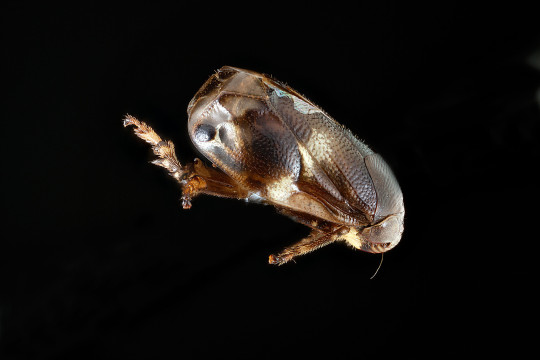
#Clastoptera (I think) spittlebug. Just testing out the camera early in our photo career. Neat "eye spot" on its hinders. Small, mysterious, part of that biodiversity filler we overlook.
44 notes
·
View notes
Text
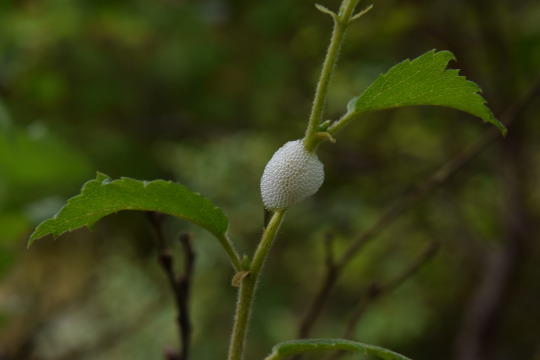
East Burn Woods // Shetland
#spittlebug#kiteknots#unedited#photography#nature photography#botanical#botanical blog#nikon#nikonnofilter#nikon photography#nikon d5300#green#greenspace#scotland#shetland#summer
2 notes
·
View notes
Text

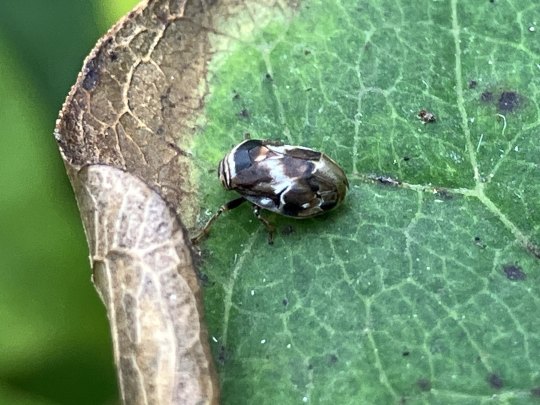
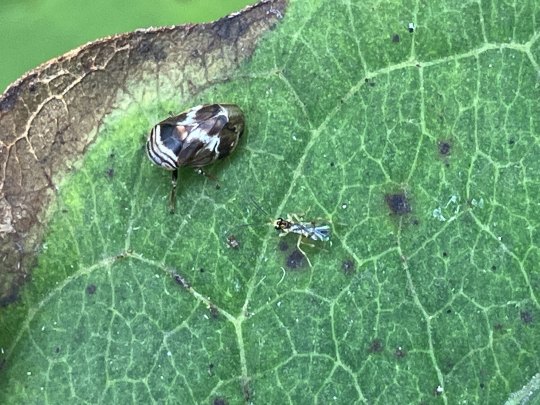
spittlebug and a small wasp
4 notes
·
View notes
Text
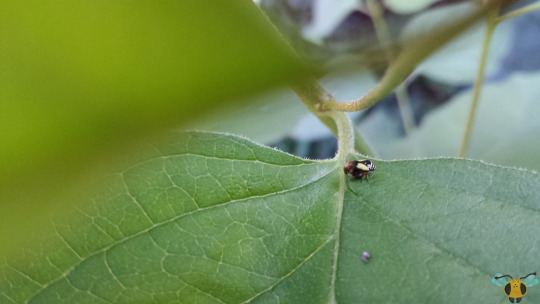
Dogwood Spittlebug - Clastoptera proteus
As far as this little Bug goes, this is the only picture I have of it. I had hoped for more pictures, but since they're so tiny finding other has proven difficult. A Hopper like this one can also be very skittish...yet another reason why this is the only picture at time of writing. Though tiny, this insect's most common form (pictured here) is very distinct and easily identifiable with its compact body and yellow forewing marking along the body. There are variations in color of course: some individuals have more black and others more yellow, and in some cases the yellow wing patch may be completely darkened! In order to conclusively identify this Spittlebug, look to the head and discover a series of yellow/black banding. Similar species within Clastoptera lack this banding. Without this, a common form C. proteus can easily be confused for the similar-looking Heath Spittlebug (C. saintcyri), while melanistic forms are reminiscent of C. testacea (the males specifically). Though identification could be tricky, these brightly colored specimens are simple to identify compared to other North American "Clastopterans" that have a brown, mottled appearance. Picture that patch on the rear wing of this individual, but coloring the whole body! A dissection microscope would be essential!
This picture was taken on July 7, 2018 with a Samsung Galaxy S4. I hope to find another example of this insect in the coming year. At least one more, perhaps on its host plant: dogwood. At the very least, other insects might be found since that tree is a popular host with insects beyond this one such as the Dogwood Sawfly and Dogwood Calligrapha Beetle.
#jonny’s insect catalogue#ontario insect#spittlebug#dogwood spittlebug#true bug#hemiptera#auchenorrhyncha#insect#2018#july2018#toronto#nature#entomology#invertebrates
6 notes
·
View notes
Text
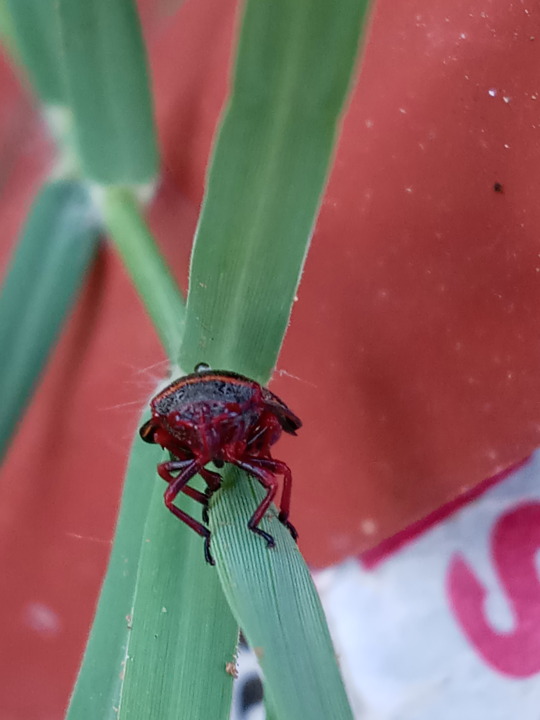
Funky lookin red n black froghopper!
#True bugs#Hemiptera#bug#bugs#insects#insect#photo#photos#arthropods#entomology#Wasp House Sights#Froghoppers#Froghopper#spittlebug
7 notes
·
View notes
Text
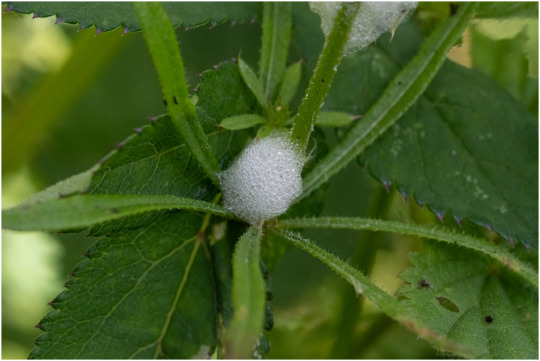
Skumcikade (Aphrophoridae indet.)
Nymfe-skjul.
Spittlebug (Aphrophoridae indet.)
Nymph hide.
#Skumcikade#Skumcikade Aphrophoridae indet.#Aphrophoridae#Spittlebug#Næbmunde#Hemiptera#Insekt#Insect#Topbjerg#Sommer#Summer#Field#Mark
2 notes
·
View notes
Text
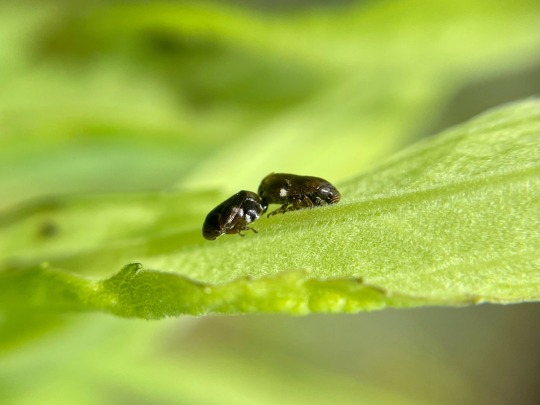
Spittlebugs
#sunflower spittlebug#spittlebug#true bug#macro photography#my photos#bugblr#nature#nature photography
3 notes
·
View notes
Text
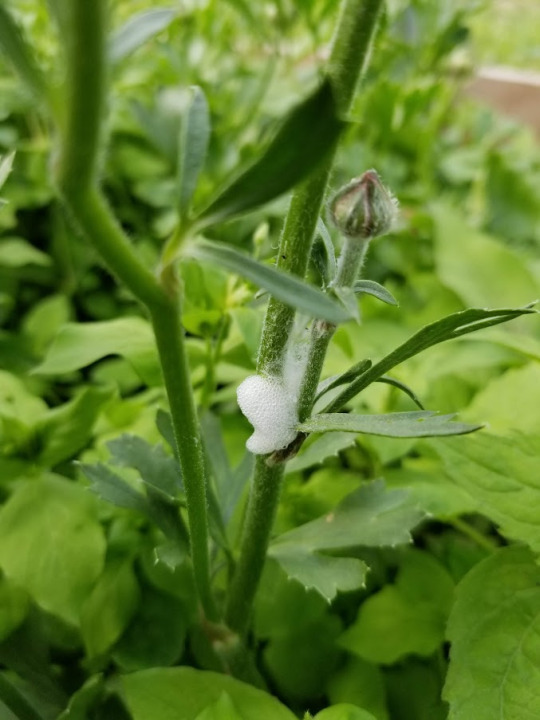
Spittlebug (Cercopoidea spp.) larvae
May 20 2022
Spittlebugs grow up to be froghoppers (very similar to leafhoppers). As larvae, they suck xylem from plant stems, and form a protective barrier of foamy bubbles.
3 notes
·
View notes
Text
Looking Through A New Lens
I have a new toy. While I’m still learning how to use it, I’m having the best time making discoveries. And trying to understand what I see. Actually, it’s two new toys. One that sees. And a second one that sees what the first one sees. Now that you either need to know more, or have already clicked out of this blog, let me explain.
It all begins with a Tiger Swallowtail butterfly, one of…

View On WordPress
0 notes
Photo




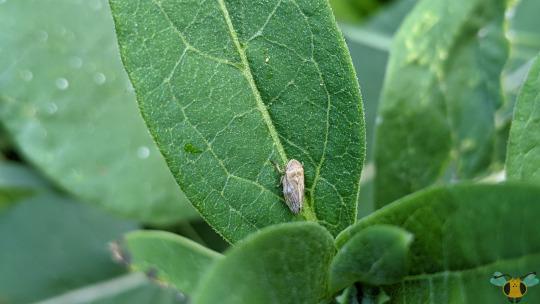
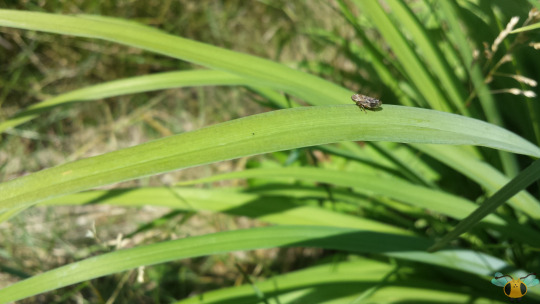
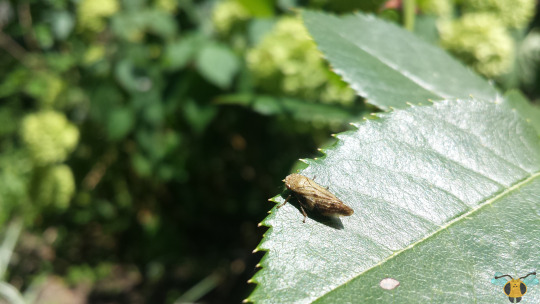
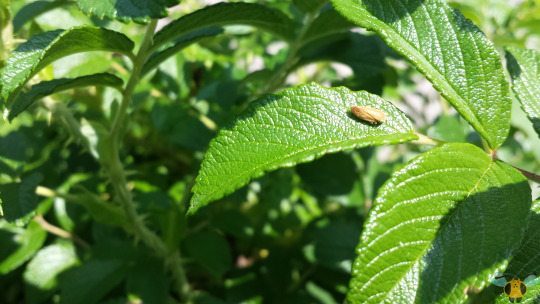
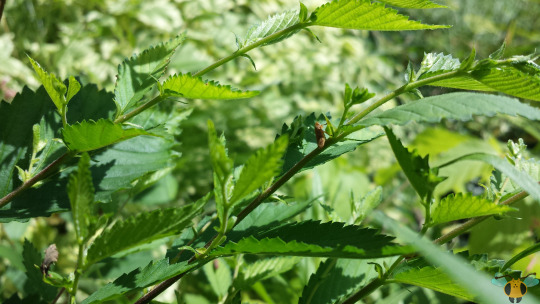
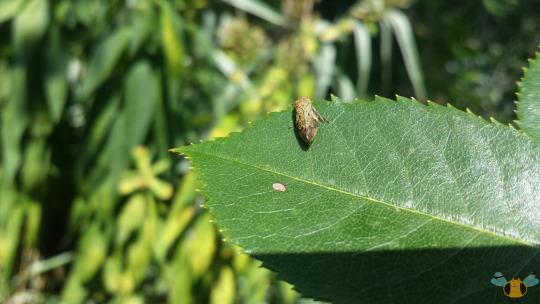
Meadow Spittlebug - Philaenus spumarius
The young Spittlebugs spend most of their lives hidden away in plant recesses covered in a frothy, foamy mass. In there, they can consume plant juices at their leisure, stay hidden from predators and avoid drying out. It’s their best choice to make since outside the foam they’re rather soft-bodied, lack defenses and aren’t too quick (as they lack the ability to hop and jump). But of course, they can’t stay young forever and eventually leave the foam after one final molt into adulthood, leaping off into the green beyond. That’s what this post is here to showcase: the fully grown adult Meadow Spittlebug, solid and fully developed, leaping around on (or around) the plants it once called home. Typically, I’ve found the nymphs nestled in goldenrod, but they apparently have a WIDE range of plants that they call food, and thus many hosts to froth up. Without goldenrod in our yards anymore, I’ve only see the occasional nymph, but year after year there have been many Meadow Spittlebugs to see, each one more unique than the last! As a quick search on Bugguide will show you, P. spumarius has a variable appearance in adulthood,
While researching this insect, I’ve found an illustration on Bugguide that effectively displays the variability of patterns (from a dorsal view) one could expect if searching for specimens. With their great range of body patterns featuring combinations of brown, white and black, I’m particularly fond of the more intricate ones or those whose wings are solid colors. So many patterns and colors, and yet they are all considered the same specie! It’s like the Asian Ladybug all over again. However, just like the Asian Ladybug, there must be some commonalities across most of the patterns that allows for effective identification. According to Bugguide, this specie has prominent wing veins (the ones closer to the body) and has either a predominantly black-colored body, or two small spots on the tip of their head, like two tiny nostrils. Being perfectly honest, I didn’t look for spots at first but after learning what to look for, I’m absolutely astonished! Such a small detail and the code was cracked! It’s not that simple for a photographer though, as the little hoppers don’t like to look at you directly and would rather zip away by hoping from plant to plant. Keep an eye out for them throughout the summer, and a second eye on any fruiting plants you may have for signs of damage.
Pictures were taken on August 26, 2017 and July 7, 2019 with a Samsaung Galaxy S4, and on June 16, 2021 with a Google Pixel 4.
#jonny’s insect catalogue#ontario insect#spittlebug#meadow spittlebug#hemiptera#auchenorrhyncha#true bug#insect#toronto#august2017#2017#july2019#2019#june2021#2021#entomology#nature#invertebrates
2 notes
·
View notes
Photo
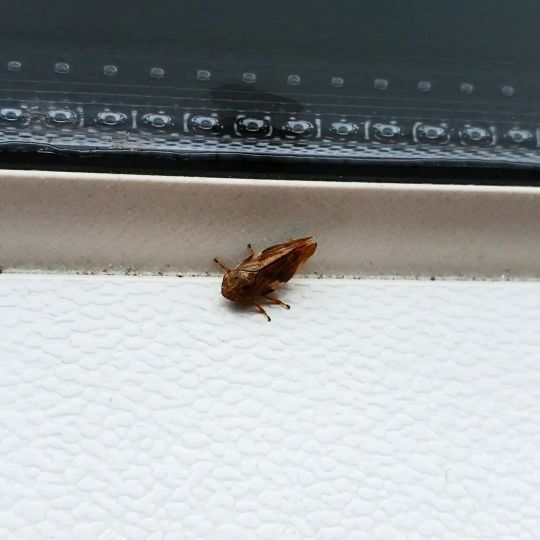
Taken 2022 31st August, this was a European alder spittle bug (Aphrophora alni) I found on the bus. In Sweden, they occur wherever forest edges, hedgerows, meadows, gardens, and parks are present. Contrary to their name, these spittle bugs don't only feed from alder trees as bushes and trees of different species are also taken, with adults prefer deciduous trees while larvae prefer herbaceous plants. They can be seen from May-October, with their life-cycle beginning in spring hatching from eggs laid close to winter. The nymphs live on the stems and leaves of herbaceous plants protected from exposure by a foam made from plant sap until they've reached their imago stage. Eventually, females will mate and will deposit her eggs on herbaceous plants close to winter, where they overwinter until the following spring starting the cycle over. #animal #animals #djur #natur #naturliv #wildlife #insect #insects #insekt #insekter #nature #spittlebug #spittlebugs #bugs #bug #arthropod #arthropods #invertebrate #invertebrates #truebug #truebugs #insectagram #animalia #arthropoda #insecta #hemiptera #aphrophoridae #aphrophora #aphrophoraalni #europeanalderspittlebug https://www.instagram.com/p/CnSQ_p7Kw_T/?igshid=NGJjMDIxMWI=
#animal#animals#djur#natur#naturliv#wildlife#insect#insects#insekt#insekter#nature#spittlebug#spittlebugs#bugs#bug#arthropod#arthropods#invertebrate#invertebrates#truebug#truebugs#insectagram#animalia#arthropoda#insecta#hemiptera#aphrophoridae#aphrophora#aphrophoraalni#europeanalderspittlebug
0 notes
Photo



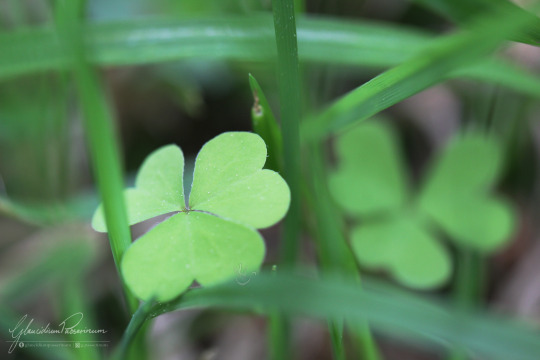
I love how one can find beauty in nature by just taking a closer look.
Many of you might have seen these little patches of froth on plants and maybe wondered why. The nymphs of the froghopper encase themselves in foam made from the plant sap while they feed for protection, which is why they are also known as spittlebugs.
#a trip to the us of a#nature#plants#leaves#animals#insects#spittlebug#froghopper nymph#raindrops#drops#fern#clover#oxalis#photography
1 note
·
View note
Text
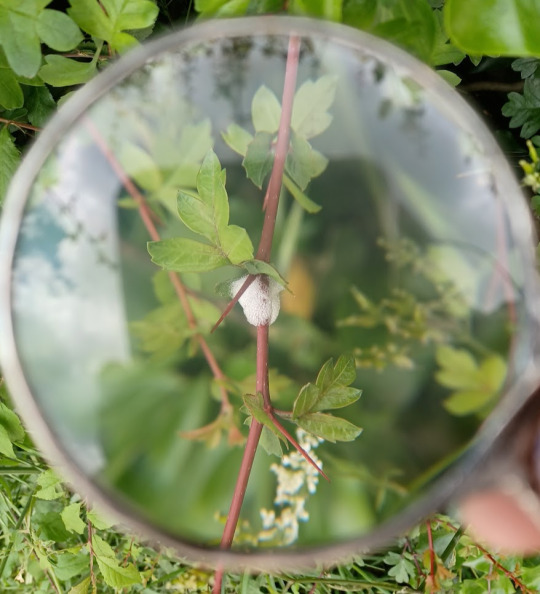
It’s froghopper nymph season!
0 notes
